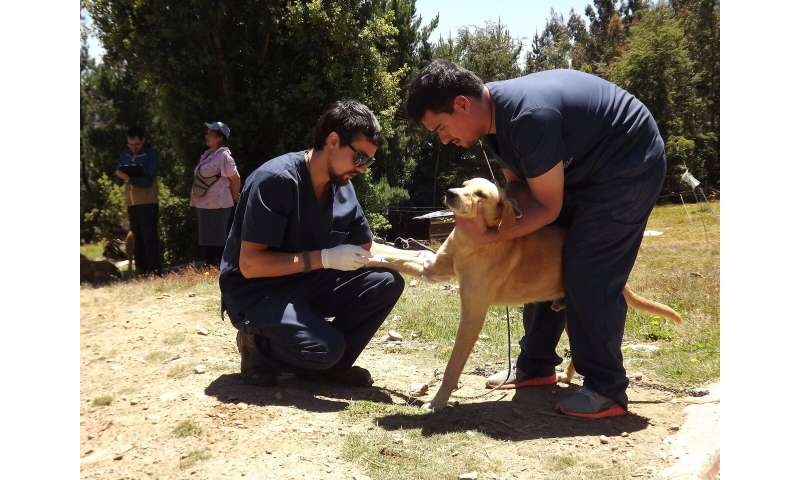Dog rabies vaccination programs affect human exposure, prophylaxis use


The World Health Organization has made it a goal to eliminate human rabies deaths due to dog bites by the year 2030. An increase in dog rabies vaccination rates decreases dog rabies cases, human exposure, and human deaths, researchers now report in PLOS Neglected Tropical Diseases.
Implementing the goal of rabies elimination requires understanding the complex interaction between dog rabies vaccination and human risk and response. Between 1995 and 2005, there was a rapid decline in dog and human rabies cases in seven Latin American countries following investments in both dog vaccination programs and human post-exposure prophylaxis (PEP) use.
New research by Jonathan Yoder, Washington State University, USA, and colleagues analyzed data from those seven countries—Brazil, Colombia, Peru, Venezuela, Nicaragua, Dominican Republic and Mexico. The data, compiled from reports published by the Reunión de Directores de los Programas de Rabia de las Américas (REDIPRA) from 1995 through 2006, included rates of dog vaccinations, dog rabies cases, reported human exposures, human PEP use, and human rabies cases.
The researchers found that a 10% increase in dog rabies vaccination rates decreases dog rabies cases by 2.3%. While human exposures decline as dog rabies cases decline, exposures per dog rabies case increase, likely due to increased awareness. In addition, a 10% increase in dog vaccination leads to a 2.8% decrease in PEP use, and each 10% increase in PEP use decreases human deaths by 7%. Overall, a 10% increase in dog vaccination reduces human deaths by 12.4%.
Source: Read Full Article




